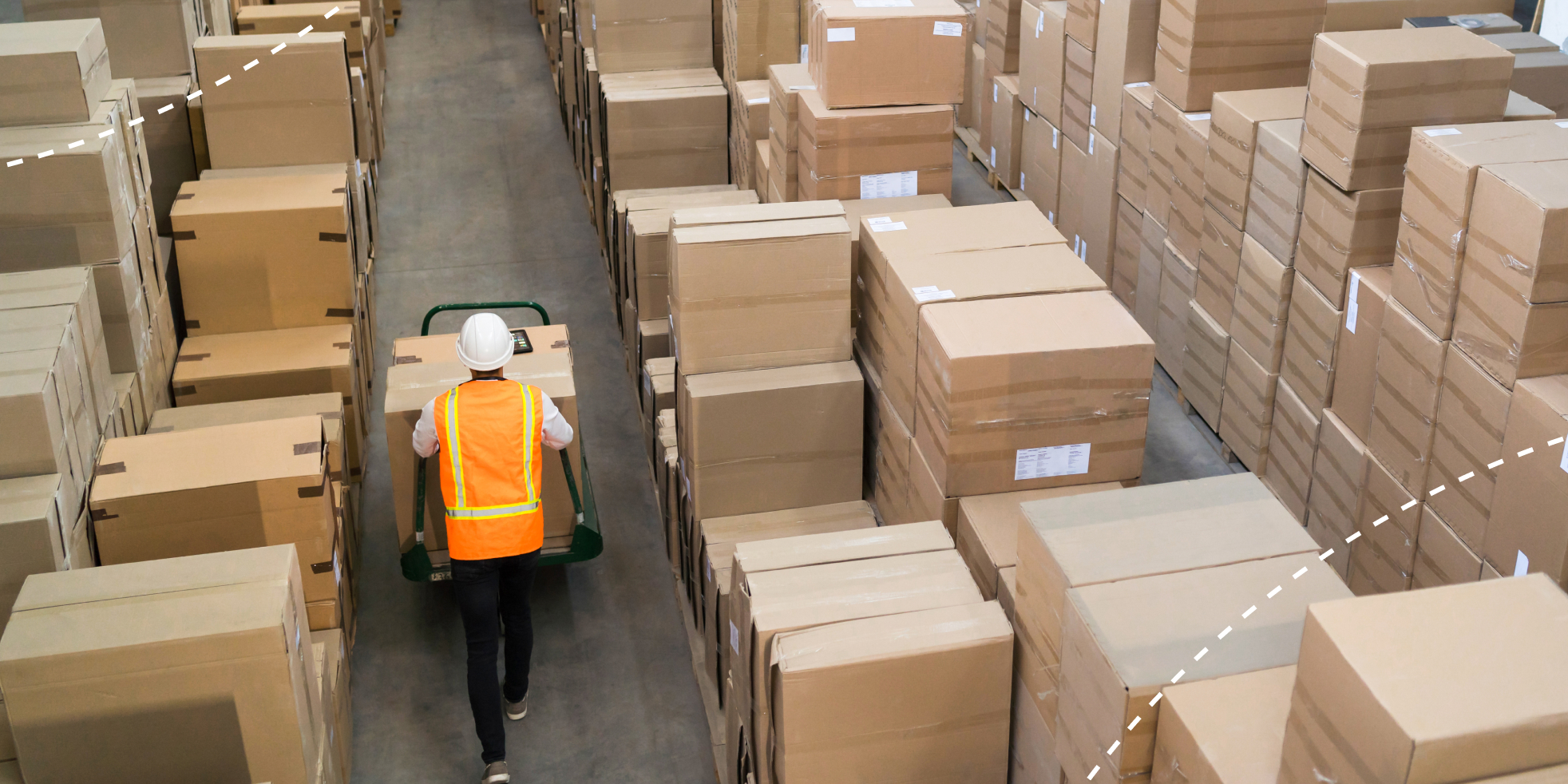The Role of Regional Warehouse(s) in Optimizing Cross-Border Returns

It is common to find many international ecommerce businesses routing all cross-border returns back to one home base as part of their supply chain. This approach may seem simple for these ecommerce companies. One warehouse. One team. One set of policies. However, many quickly realize this is not as simple as it seems. The cost alone can erode all profits made in the sale. And worse, it can frustrate customers. But if this is a problem and returns must be managed effectively, what is the solution? Regional warehouses offer a smarter approach.
Global shoppers want fast refunds and simple returns. Centralized return models often create delays, higher shipping costs, and unhappy customers. Most international retailers are not prepared for the real cost of international returns. By leveraging regional warehousing, your entire business can process returns closer to where customers live. This way, it reduces costs for consumers, speeds up restocking, and protects profit margins.
It explains how regional warehouses can improve the return process, logistics and operational efficiency, inventory management, and reduce return shipping costs. It shares clear steps e-commerce companies can take to get started in their returns management process.
Why Cross-Border Returns Are So Expensive

Without careful planning, cross-border returns can erase the profit from an entire international order, impacting how many more consumers choose to shop. According to this report, international e-commerce return rates can reach 26%, with apparel and electronics being the highest.
Generally speaking, many businesses underestimate the true cost of cross-border returns. And that is because a lot of the challenges related to return costs are not glaringly obvious at first. Here is where these costs build up and how they impact overall operations:
1. Shipping fees
International shipping is expensive, especially for return trips, consuming valuable resources in the process. Rates can be two or three times higher than outbound shipping, especially when the first shipment into the country possibly benefited from economies of scale.
2. Duties, Taxes, and Complex Inspections
Some countries charge import duties or taxes that cannot be recovered, even when an item is returned. Beyond that is the added complication of checking and sorting returned items, which takes longer when done at a distance or in a country unfamiliar with the product, making it harder for items to be shipped back correctly.
3. Slow transit, Higher Damage, and Risk of Loss
Cross-border returns often take weeks to reach the original warehouse, and are often stuck in transit during that time. This slows down refunds and resale. The impact of slow transit times goes beyond the profit margins and expenses. For example, it can result in low levels of customer satisfaction due to long delivery times, which puts your business at risk of losing sales in the future.
More distance and handling also increase the chance of the returned items getting damaged, stolen, or lost. All around, it is too risky to have these products traveling back, increasing transportation costs.
How Regional Warehouses Optimize Cross-Border Returns

Regional warehouses can be fully owned by the e-commerce company or managed by third-party providers known as overseas fulfillment centers. Either way, these facilities serve as international return hubs that help speed up and simplify the returns process.
Here is how:
1. Reduces Return Shipping Costs
Shorter return trips mean lower shipping costs. When customers return items to a regional warehouse instead of shipping them overseas, the savings positively impact stock levels and help maintain inventory turnover.
For example, if a U.S.-based fashion retailer opened a regional warehouse in Germany to handle European returns from multiple destinations, return shipping costs would drop significantly, giving customers easier access to returns processes.
A great case study on this is Temu and the various warehouses it operates across the United States. Faster processing allows the international retailer to resell returned goods sooner, keeping inventory levels stable.
2. Speeds Up Return Processing and Restocking
Items sent back to international return hubs can be inspected and sorted quickly. This ensures products ready for resale can re-enter inventory without long delays. Those that aren’t can quickly undergo repair and maintenance as necessary. When returns take weeks to process, seasonal products often miss their selling windows. And then have to stay on the books longer than intended.
By prioritizing and facilitating shorter processing windows, your e-commerce business can have more opportunities to sell returned items while demand is still strong.
3. Improves Customer Experience
Regional warehouses allow for faster refunds and exchanges. And local return options, such as nearby drop-off points, make the process easier for customers. This speed and simplicity foster satisfaction among international customers, which can build trust and translate to customer retention and loyalty. When shoppers know they can return items easily, they are more likely to buy again. Decentralized returns management also reduces the workload on customer support teams, as fewer customers call or email to ask about delayed returns.
4. Lowers Risk of Product Loss or Damage
Regional processing reduces the number of carriers and handoffs required for returns. Fewer transfers mean a lower chance of damage or lost packages. Items are also stored and handled in environments suited to the local market, improving quality control.
Key Considerations When Setting Up Regional Warehouses
Regional warehousing ensures that items are collected at a distribution point, inspected, and processed at these closer locations instead of sending all returns to the seller’s home country. However, here are key considerations that would determine the success rate of the regional warehouses:
1. Analyze Return Volumes by Market
Before investing in regional warehouses or overseas fulfillment centers, examine where returns come from. Focus on markets with high sales and return volumes where local processing can deliver orders more efficiently and create the biggest savings.
2. Choose Between Owned Warehouses and 3PL Partnerships
Investing in international return hubs and decentralized returns management gives businesses better control over returns and supports long-term success in global markets. However, you must make a decision between owning a regional warehouse, which offers full control but requires a large upfront investment, and partnering with a third-party logistics provider or overseas fulfillment centers.
Third-party logistics providers can be faster and more flexible. Many 3PLs specialize in reliable distribution and decentralized returns management and can help set up services quickly.
3. Align Return Policies with Regional Capabilities
Return policies must reflect what is possible in each region. If certain services, like repairs or exchanges, are not available locally, set clear expectations with customers.
4. Use Technology for Inventory and Data Tracking
Integrate inventory and return data across all locations. This helps identify trends and opportunities for improvement. It also supports faster decision-making and better use of returned products.
Managing Regional Warehousing With ReverseLogix
Cross-border returns are not just a shipping problem. They affect the entire customer experience and can quickly eat into profits. Most companies still rely on outdated models, including central warehouses, that increase costs and delay refunds. However, regional warehouses can optimize operations and offer a smarter approach. By moving returns processing closer to customers, e-commerce companies can reduce return shipping costs, speed up refunds, and improve customer satisfaction.
ReverseLogix offers a robust returns management platform that makes the whole process easier and faster. Our smart technology handles returns from start to finish, saving you time and money. Whether you run a small online shop or a big company, our tools can help you. The best part? Our returns automation system grows with your business, simplifying returns management for end customers. Get a demo today.
Frequently Asked Questions
Decentralized returns management helps handle returns in different regions across more than one facility, rather than sending everything to one central location. Regional warehouses are a key part of this approach.
No. Many also store inventory and ship new orders. This can speed up both deliveries and returns in international markets.
Shorter return routes mean fewer hand-offs between carriers and less chance of damage or loss for e-commerce businesses. It also helps your business meet local demand faster.
They can lower return shipping costs, improve inventory management, and help businesses meet customer expectations better across different countries, all of which support long-term growth.
